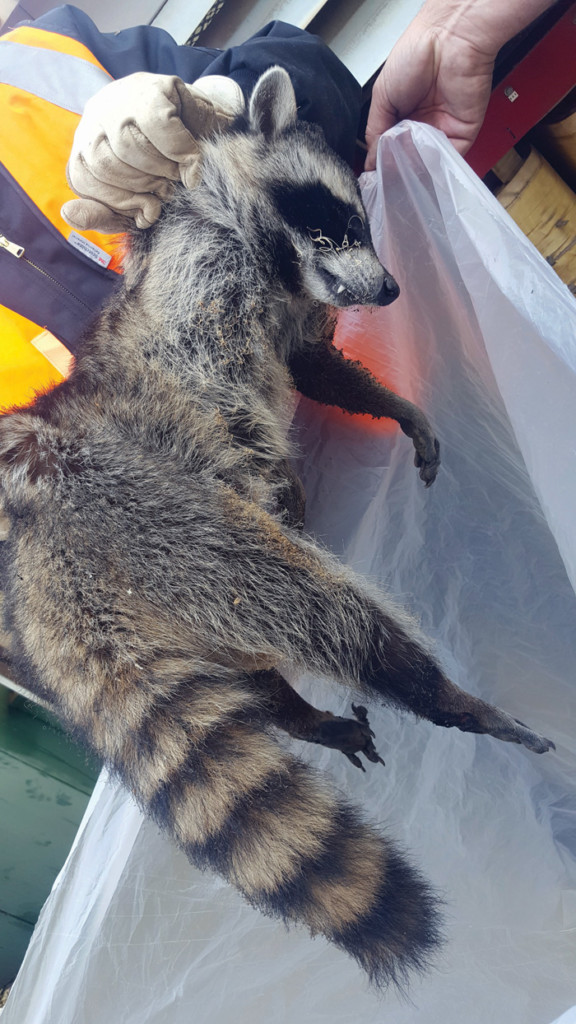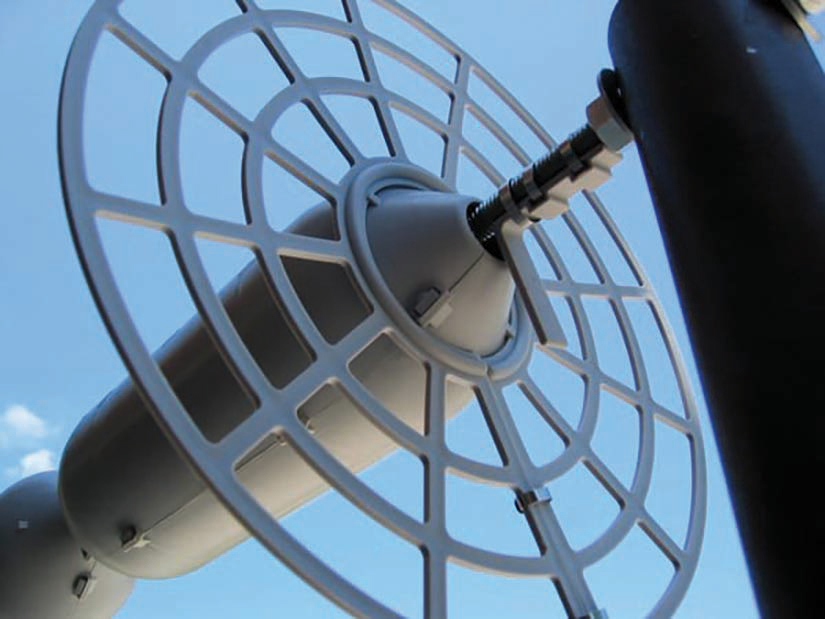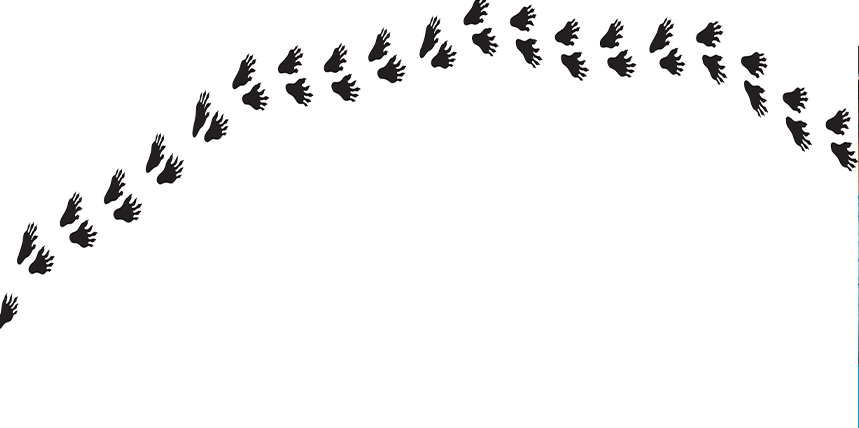Emergencies always seem to occur on Fridays and weekends, and true to form, a panicked customer called about a power outage to a significant portion of a college campus on a Friday morning. It seemed likely to be a 4,160 volt cable or unit substation problem, so we pulled two technicians away from an acceptance testing project and got them on their way.
The technicians weren’t far into their investigation before I received a text photo of a deceased 25-pound raccoon. Everyone felt sorry for a moment but then focused back on the business of quickly procuring a 5 kV fused-load interrupter switch, as the raccoon had created massive unrepairable damage.

Animals like this raccoon are often killed by electrical gear.
The memory of this event refueled my recollection of other animal-related failures, and every technician out there probably has their own stories.
Animals don’t have NFPA 70E training, and they ignore electrical equipment warning labels. Unfortunately, electrical enclosures provide ideal shelter for these animals. Keeping them out of the equipment is extremely important but easily overlooked.
One memorable event occurred on a Saturday morning (yet another weekend emergency) when a cat got into a 15 kV switchgear lineup and across the pole of a vacuum bottle on a feeder breaker. The event ruptured the bottle and tripped the main. The cleanup didn’t take very long, and the customer had a spare breaker on hand, which minimized the outage duration, so focus turned to repairing the damaged breaker. Cats, like other mammals, are attracted to switchgear warmth and shelter.
A few months ago, our team performed successful VLF withstand and partial discharge acceptance testing of a solar facility circuit and were astonished when the customer called to tell us the recloser had tripped. Confident the cable was good, we suspected a protection programming issue, and some changes had been made more than once along the way by the owner. When our technician arrived at the pole where the relay enclosure was mounted, he found a large, deceased crow missing one wing. Apparently, the bird’s wing-span was wide enough to breach two phases at the riser terminations, which significantly damaged two of these components. This repair required an aerial lift truck and a splicer and replacement of all three terminations, which the customer fortunately had on hand. The total outage duration was less than 24 hours even with a lot of necessary travel time due to the site’s remote location.
Mice incidents are so common, one of our technicians once kept a dead-mice board with dozens of incident photos on display in the shop. Although the technicians seemed to be fascinated and amused by the display, the admin staff protested, and the board was eventually removed. Mice seem to have magical abilities to fit through very small spaces and will use unsealed conduits as their personal pedestrian tunnels for safely getting around. Sealing electrical enclosures as much as possible goes a long way to prevent mice-related outages.
Prevention
A squirrel or bird guard is a reliable means of preventing animal-related flash-overs in outdoor substations, but care must be taken to ensure these components are installed correctly. Failure to install guards with proper clearances could result in eventual failures.

An animal guard can prevent damage.
Lessons
Several lessons can be learned from these experiences to help prevent unplanned outages:
- Seal all equipment openings.
- Seal all conduits.
- Consider using animal guards for outdoor substation and overhead insulators and bushings.
- Keep spare components available to minimize outage duration.
 Don A. Genutis presently serves as President of Halco Testing Services, Inc., a NETA Accredited Company with offices in Los Angeles and Houston. He has held various principal positions during his 35-plus year career in the electrical testing field, primarily focused on advancing no-outage testing techniques for the last 20 years, with emphasis on cable and switchgear on-line partial discharge testing techniques. Early in his career, Don acquired and operated the former Westinghouse East Pittsburgh Insulation Research Laboratory, where he gained valuable experience in understanding insulation material performance. Don holds a BS in electrical engineering from Carnegie Mellon University and is a NETA Certified Technician. Don has authored 50 technical articles for NETA World and has been featured in EC&M and Uptime magazines. Don’s work is summarized in his book, Partial Discharge & Other No-Outage Testing Methods, published in 2019.
Don A. Genutis presently serves as President of Halco Testing Services, Inc., a NETA Accredited Company with offices in Los Angeles and Houston. He has held various principal positions during his 35-plus year career in the electrical testing field, primarily focused on advancing no-outage testing techniques for the last 20 years, with emphasis on cable and switchgear on-line partial discharge testing techniques. Early in his career, Don acquired and operated the former Westinghouse East Pittsburgh Insulation Research Laboratory, where he gained valuable experience in understanding insulation material performance. Don holds a BS in electrical engineering from Carnegie Mellon University and is a NETA Certified Technician. Don has authored 50 technical articles for NETA World and has been featured in EC&M and Uptime magazines. Don’s work is summarized in his book, Partial Discharge & Other No-Outage Testing Methods, published in 2019.
